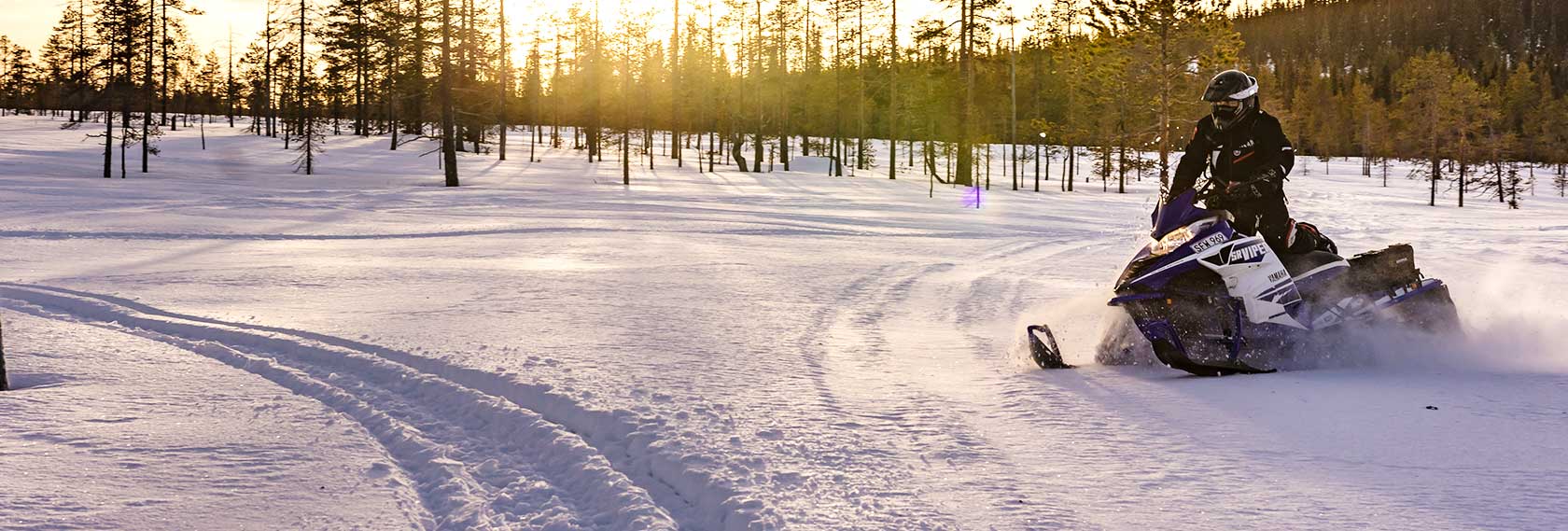

There are many questions that every snowmobile club and their volunteers get… “Where can I get a Trail Pass?” “Where can I park?” “Where can I get a map?” But I think the hardest one to answer is, “When are the snowmobile trails going to be open?” or “Why did you close them?”
Last year in our neck of the woods we were teased early in the season with lots of measurable snow, but it was what I call “Fairy Dust.” Very light and fluffy stuff and despite having a foot or more, it just wouldn’t pack down. After just two or three sleds it would simply be push off the trail, exposing the frozen ground underneath.
I had numerous calls from club members who were frustrated that we had all that snow but the trails remained closed. I would explain the reasons and for the most part people understood but I know there were some that thought otherwise. That got me thinking. There are so many people out there who still don’t realize it’s not just the snow that keeps our snowmobile trail system open and available to us. It’s a complicated combination of many things that all have to come together to get the end result we all hope for, which is, open snowmobile trails. So despite barely making it thru algebra, I believe it boils down to an equation that looks something like this:
If (LP) x (SCV + TM) x (SD > Amin) x (R + STP) x (R4ALL) = YES then our “TRAILS are OPEN”
It might look like gibberish but let’s break it down. First, as you know, anything times 0 = 0. So if we lose any of the pieces of this formula then the end result would be a no and our trails are closed.
LP = Land owner permission.
This is the foundation building block for all trails. Also remember It’s not always your neighbor or a private land owner, it could be a private entity like a land trust or a state agency, like the Department of Fish and Wildlife. Without landowner permission our trails would be closed.
SCV + TM = Snowmobile Club Volunteers and Trail Maintenance.
Without the countless hours from numerous club volunteers working around the calendar getting land owner permissions, clearing trails, making bridges and maintaining equipment, our trails would be closed.
SD > Amin = Snow Depth is greater than Agreed Minimum.
This one is tricky as it can be different across different properties. State regulations say four inches of hard packed snow. That doesn’t mean four inches of that light fairy dust. It means a hard pack, something you can walk on top of, snow that would be a pain in the neck if you had to shovel it. Some entities require at least six inches. I know of clubs that have agreements with land owners across specialty fields that have sod or low lying plants that without proper snow coverage could be destroyed by sleds. Without the proper snow pack our trails are closed.
R + STP = Registration and SAM Trail Pass.
This should be self-explanatory. Without being properly registered and having a Snowmobile Association of Massachusetts trail pass the trails are closed to you, unless you dare to ride anyways, which then makes you eligible for fines up to $500 and having your sled impounded.
R4ALL = Respect For All.
If, as snowmobilers, we do not respect landowners requests, respect and support local clubs, with both your time and money, obey the signs on the trails, don’t wait for the minimum snow pack, you could personally cause a trail to be closed. Not for the season but permanently!
How can you help to get trails open and keep them open you ask?
Do what you can to make a positive impact on this formula. Ride like you want the trails to stay open, leave the snow pack on the trail to be measured, obey all signs, as most are for your safety. Add to the equation by volunteering your time, energy and resources to your local club. Respect the work that so many others do, including the land owners, local club members and all those that keep SAM running smooth, keeping us all organized, and riding on well-maintained and open trails. Until next time, keep the rubber side down.
Photos by Harry Kennedy and Dan Gould